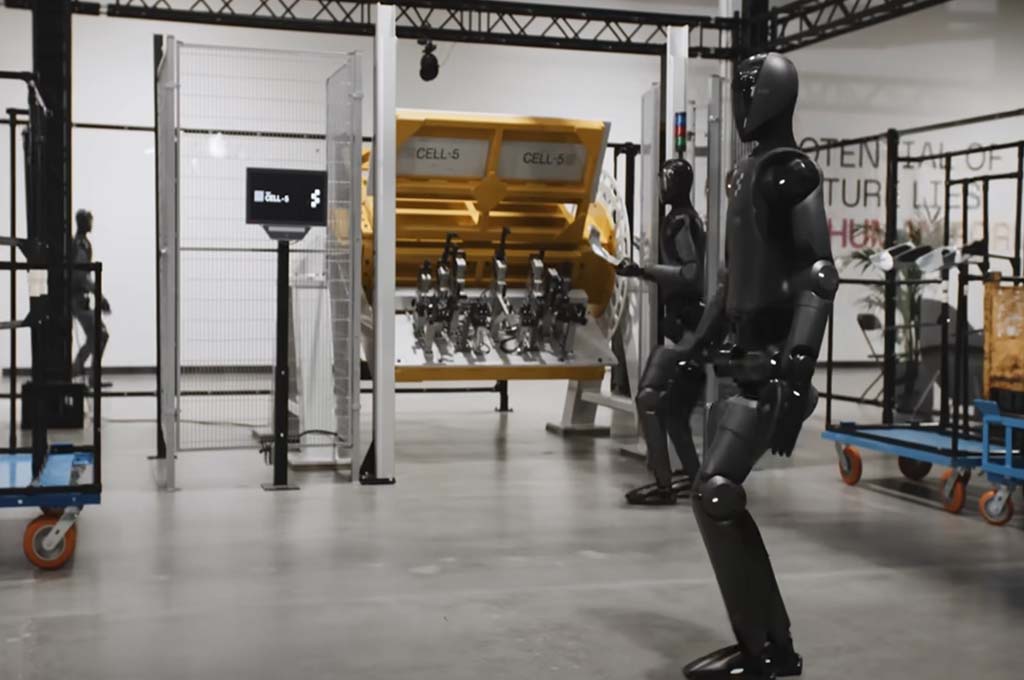Robot Reality: Figure 02 Joins the Assembly Line

The idea of robots working side-by-side with people in factories is fast becoming a reality. Figure 02, is a cutting-edge creation from the American company Figure AI, marking a significant leap in humanoid robotics. Currently undergoing real-world testing at BMW’s manufacturing plant in Spartanburg, South Carolina, this robot demonstrates the exciting potential for boosting automation and efficiency in industrial processes. This article will explore the abilities of Figure 02, its current use at BMW, how reliable it is proving to be, and what this means for the future of work.
Figure AI: The Innovators Behind the Humanoid
Figure AI, the company responsible for Figure 02, is dedicated to building adaptable humanoid robots capable of tackling a wide variety of tasks. The Figure 02 is their most advanced model so far, embodying their commitment to creating robots that are not just technologically impressive but also practical and ready for the demands of real-world industry. The company is focused on developing robots that can learn and adjust, fitting smoothly into existing human workflows.
The rapid progress and impressive capabilities of Figure 02 have attracted considerable attention and investment, highlighting the potential for this technology to transform industries. Figure AI’s partnership with BMW, further confirms the viability of their approach and the readiness of their robots for demanding industrial applications.
Figure 02: Ushering in a New Age of Automation at BMW
The introduction of Figure 02 at BMW Group Plant Spartanburg represents a major step forward in the integration of humanoid robots into manufacturing. In a live production setting, Figure 02 is currently performing the task of placing sheet metal parts into specific holding devices, a vital stage in the assembly of car bodies. This task showcases the robot’s accuracy, dexterity, and its ability to manage complex manipulations.
Compared to earlier models, Figure 02 boasts a significant increase in its processing power, improved voice communication abilities, and a more powerful battery. These enhancements contribute to its overall efficiency and its capacity to perform tasks independently and effectively within a busy factory environment. The robot’s design, featuring human-sized hands with sixteen active joints, allows for precise gripping and the ability to use both hands in coordination, making it even more versatile.
Reliability and Performance in a Demanding Setting
Weighing in at 70 kilogrammes and standing around 170 centimetres tall, Figure 02 is engineered for industrial strength and accuracy. Its ability to position components with millimetre precision highlights its advanced engineering and control systems. The robot’s design prioritises both strength, with a lifting capacity of 20 kilogrammes, and flexibility, enabling it to navigate and operate effectively within the complex and often challenging environment of a car production line.
While Figure 02 is still in the testing and refinement phase, its initial performance at BMW indicates its potential for reliable and consistent operation. Continuous monitoring and the analysis of data from this real-world deployment will be crucial for further improving its performance and ensuring its long-term suitability for industrial applications.
Implications for the Workforce: Collaboration and Increased Efficiency
The introduction of Figure 02 into BMW’s production line signals a move towards greater collaboration between humans and robots. Rather than simply replacing human workers, Figure 02 is being used to assist employees by taking on tasks that can be physically demanding and repetitive. This allows human workers to concentrate on more intricate and strategic aspects of the manufacturing process.
This focus on teamwork suggests a future where humanoid robots enhance the human workforce, leading to greater overall efficiency and productivity. By automating tasks that are physically taxing and repetitive, Figure 02 can contribute to better working conditions and a reduction in workplace injuries. This collaborative approach has the potential to reshape the future of manufacturing, creating a more efficient and sustainable operational model.
Ethical and Societal Considerations
The increasing capabilities and deployment of humanoid robots like Figure 02 necessitate careful thought about the ethical and societal implications. Ensuring the safety of human workers alongside these advanced machines is of utmost importance. Establishing clear safety guidelines and regulations will be essential and the data gathered by the robot’s sensors and its learning algorithms must be handled responsibly, addressing any potential concerns about privacy.
As humanoid robots become more common, it is vital to encourage public discussion about their role in society. Addressing potential anxieties about job losses and ensuring a fair and just transition to a more automated future will be crucial.
Conclusion
Figure 02 represents a significant step towards a future where humanoid robots play a key role in manufacturing. Its successful testing at BMW demonstrates its abilities and potential to transform industrial processes. While the long-term impact on the workforce and society requires ongoing consideration, Figure 02 marks the beginning of a new era in automation, promising increased efficiency, improved working conditions, and a more collaborative future for humans and robots in the workplace. The continued development and refinement of Figure 02 will undoubtedly shape the future of manufacturing and other industries, ushering in a new age of robotics.

